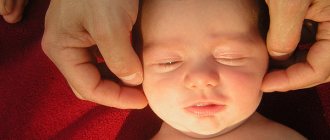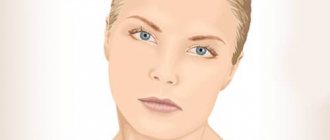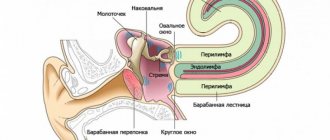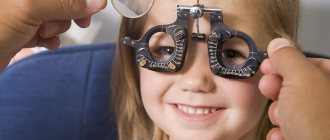Dysarthria is a form of speech dysfunction that occurs as a result of organic damage to the central and peripheral nervous system. This disorder is characterized by a violation of articulation, phonation, intonation coloring and tempo-rhythmic organization of speech.
Initially, during the development of a speech deficit, the state of the articulatory apparatus suffers. With dysarthria, this is due to insufficient innervation of the muscles of the lips, soft palate, tongue, vocal cords and facial muscles. As a result, a whole complex of speech and non-speech disorders is formed, which makes up the structure of the defect.
Common clinical signs of dysarthria are slurred and slurred speech. The patient pronounces words vaguely and inarticulately, as if he has “porridge in his mouth.”
In the field of speech therapy, dysarthria ranks third after alalia (complete absence of speech) and dyslalia (sound pronunciation defects) among the most common oral speech disorders. Most often, this psychoneurotic disorder occurs in childhood, in approximately 10-15%. Among the adult population of the Russian Federation, the prevalence of this type of speech defect is 6-8%.
At the Yusupov Hospital, a team of neurologists together with psychotherapists offers a whole range of different services for the treatment of mild and severe forms of speech dysfunction.
Causes
The causes of dysarthria are directly related to diseases that affect the posterior parts of the frontal zone and other parts of the brain. Speech reproduction is impaired due to difficulty moving the tongue and lips. In childhood, in almost all cases, written speech, perception of sounds and reading abilities change.
In adults, such phenomena are observed much less frequently. Dysarthria often occurs during intrauterine development. The factors that caused the disease are gestosis (late toxicosis), oxygen starvation of the fetus, chronic diseases of the mother, injuries received during childbirth, prematurity, suffocation at birth, cerebral palsy (cerebral palsy).
At an early age, the disease is diagnosed due to previous purulent otitis media, meningitis, severe poisoning, hydrocephalus, increased intracranial pressure, as well as traumatic brain injuries. In adults, dysarthria results from:
- Tumors of the brain or cerebellum;
- Cerebrovascular accidents;
- Demyelinating disease (brain disease);
- Having suffered a stroke;
- Syphilitic lesions of the spinal cord or brain;
- Traumatic brain injuries;
- Abscess (purulent inflammation) of the cerebellum;
- Severe poisoning with poisons;
- Parkinson's disease (shaking palsy);
- Multiple sclerosis;
- Severe infectious pathologies;
- Hemorrhages in the brain;
- Serious disorders of the nervous system;
- Autoimmune neuromuscular disease;
- Cerebrovascular diseases;
- Fazio-Londe syndrome (juvenile paralysis);
- Mental retardation (oligophrenia).
In adults and older people, the disease most often occurs suddenly due to a prolonged period of unconsciousness (coma after a traumatic brain injury or major stroke). Dysarthria is often caused by improperly performed brain surgery and botulism (a disease associated with poisoning).
Pathology can also appear due to excessive consumption of alcoholic beverages, improper use of certain groups of medications, and drug overdose. High-risk groups include children under 2 years of age, adolescents and the elderly. At a young age, pathology is diagnosed, but not so often.
The disease is acquired in nature; as a rule, it does not have a genetic predisposition. Only pathologies of brain development that contribute to the occurrence of dysarthria can be inherited.
Classification
Neurologists and speech therapists are still actively discussing a generally accepted classification of dysarthria, but consensus has not yet been reached. The classification of dysarthria, which is based on the localization of the pathological focus, includes the following types:
- Bulbar dysarthria - associated with the involvement in the pathological process of the nuclei of the cranial nerves, which are localized in the medulla oblongata;
- Pseudobulbar dysarthria - in which the pathology concerns the pathways connecting the motor centers of the cortex with the nuclei of the bulbar nerves;
- Subcortical dysarthria - in which the subcortical nuclei of the brain are affected;
- Cerebellar dysarthria – pathology of the cerebellum and its pathways;
- Cortical dysarthria is a focal pathology of the cerebral cortex itself.
The classification of dysarthria according to the degree of severity divides it into erased, mild, moderate and severe dysarthria.
The Yusupov Hospital has been successfully treating patients with this type of pathology for many years. Doctors achieve tremendous results not only with erased dysarthria, but also with severe disease. Make an appointment
Types of dysarthria and their clinical characteristics
Dysarthria is divided into types according to the location of the damage, the degree of speech impairment and the defining, most pronounced symptom. What is dysarthria?
There is a classification of dysarthria according to Pravdina depending on the location of the pathological process. The following types of dysarthria are distinguished:
- Bulbar;
- Pseudobulbar;
- Cortical;
- Cerebellar.
Bulbar dysarthria develops due to damage to the cranial nerves, which are located in the medulla oblongata. With this form of dysarthria, the connection between the muscles that provide articulation and the central nervous system is disrupted. As a result, the patient has difficulty performing correct movements with the tongue and lips, which are in a relaxed state. His face becomes inactive and salivation increases.
Pseudobulbar dysarthria predominantly occurs due to ischemic stroke of the brain in people over 50 years of age or at any age with traumatic brain injury. Patients have pronounced atrophy of the muscles of the speech apparatus, which leads to monotony of speech, difficulty chewing and swallowing, and increased salivation.
Cortical or cortical dysarthria is a speech disorder due to the following reasons:
- Damage to the frontal lobe of the brain due to trauma;
- Presence of a frontal lobe tumor;
- Previous diseases (encephalitis, meningitis) as a result of which neurotransmitter functions are partially lost.
With this type of dysarthria, the pronunciation of consonants and the rate of speech are disrupted, the automaticity of articulation disappears, and nasal sound appears.
Cerebellar dysarthria occurs due to damage to the cerebellum. This type of speech disorder is quite rare. She most often accompanies other dysarthria firms. Due to dysfunction of the cerebellum and its connections with other parts of the brain, patients develop the following disorders:
- Softness of the tongue and palate;
- "Drunk speech";
- Speech fading at the end of a phrase;
- Scanning of individual syllables or sounds;
- Violation of accents.
Aphasiologists classify cortical dysarthria as a mild speech disorder in motor aphasia. There are efferent (premotor) and afferent (postcentral) forms of cortical dysarthria. The efferent form of cortical dysarthria occurs when there is damage to the area of the anterior central gyrus, which represents the innervation of the muscles that provide articulation. In patients, articulatory movements are impaired, but the content of speech is not impaired. This fundamentally distinguishes cortical dysarthria from aphasia. Articulatory cortical dysarthria concerns only specific speech movements. Other voluntary and involuntary movements of the lips and tongue remain intact.
The afferent form of cortical dysarthria occurs when the postcentral areas of the cerebral cortex are damaged. In adults, paretic dysarthria occurs with brain tumors. Such dysarthria in adults is compensated after removal of the tumor. Mesencephalic-diencephalic dysarthria is associated with damage to the nuclei of the cranial nerves.
Hyperkinetic dysarthria occurs in patients with cerebral palsy. It is characterized by excessive involuntary movements in the articulatory apparatus, which intensify during the speech act. In patients, hyperkinesis is clearly expressed in all parts of the speech motor apparatus and facial muscles. They are also noted in the upper extremities, becoming more frequent and intensifying when trying to speak. Less common are involuntary movements in the shoulder girdle, lower extremities, and shoulder girdle.
Atactic dysarthria is observed in the atonic-astatic form of cerebral palsy. Rarely found in its pure form. More often it is a concomitant syndrome against the background of spastic paresis or hyperkinesis. The leading syndrome in ataxic dysarthria is ataxia. It manifests itself in hypermetric, asynergic disturbances of articulatory movements and in the scantiness of the rhythm of speech. Optical disturbances occur with an erased form of dysarthria.
Paroxysmal dysarthria is observed in patients suffering from multiple sclerosis and other diseases of the nervous system. Patients experience isolated attacks that usually last less than 1 minute, but can recur up to several times a day. Sometimes they are triggered by anxiety or hyperventilation. Dysarthria can reach such a severe degree that a person’s speech becomes completely unintelligible. People with dysarthria may experience associated symptoms such as numbness, double vision, or weakness. Mixed dysarthria develops in children after trauma.
Features of erased dysarthria
Erased dysarthria is a pathology in which mild disturbances of nerve conduction of the organs of articulation are observed.
Patients have mild disturbances in sound production and stress placement defects. Speech with erased dysarthria is not clear and unexpressive. Patients have difficulties with sound reproduction of certain phonetic groups and with their automation. This form is most common among children. Signs of dysarthria are also observed in writing - handwriting with dysarthria is illegible, and children write slowly. Erased dysarthria is diagnosed by determining the neurological and speech therapy status.
Depending on the location of the lesion, clinical manifestations also differ. With erased cortical dysarthria, only phonetics is disturbed, with preservation of phonetics and correct stress, since only a section of the cortical center is affected.
In the case of damage to the nuclei and ganglia, pronounced disturbances in stress are observed, but disturbances in perception and the production of sounds are practically preserved or are slightly impaired.
Pseudobulbar dysarthria leads to a uniform disturbance of all components of speech, since the conduction pathways from the cortex to the bulbar nuclei are affected.
The mixed form often includes a defect in sound pronunciation and differences in sounds.
A mild degree of erased dysarthria is characterized by minimal manifestations of pronunciation and stress defects and quite often goes unnoticed. But with a thorough examination by a specialist, the pathology is established. Correction of mild degrees of erased dysarthria includes breathing exercises, finger and articulation exercises, speech therapy and general massage, speech correction, etc.
Features of mild dysarthria
With a mild degree of dysarthria, there are no gross violations.
In the first degree of dysarthria, articulatory motor skills are inaccurate and slow. The speech is understandable, but a certain defect is still noticeable. Because of it, communication is disrupted. Patients prefer to speak using short words and sentences. Neurotic disorders often occur due to speech impediments. In children whose speech function is just beginning to develop, a diagnosis of mild dysarthria should be immediately treated to prevent general underdevelopment of speech function in the future. Untreated dysarthria will lead to impairment of written speech in the future. If speech disorders in childhood are not corrected, in the long term this will lead to a delay in the child’s mental development. Children with mild dysarthria receive education in secondary schools.
There are no gross defects in chewing and swallowing, but choking and coughing are sometimes observed. The patient's facial expressions are usually not impaired.
Diagnosis and treatment
It is difficult to diagnose the cortical form of dysarthria in a child under 2 years of age. The type of speech pathology is determined by a neurologist and speech therapist. The following types of examinations are carried out: neuroimaging, CT and MRI of the brain, PET-CT, lumbar puncture.
Based on the examination results, the doctor prescribes treatment.
Correction of the cortical form of dysarthria involves a set of measures that normalize speech function. Depending on the characteristics of the clinical course of the pathology, in particular, the following methods are used: the use of nootropic, vascular-strengthening and sedative medications; articulation exercises; correction of the pronunciation of difficult to pronounce sounds; breathing exercises; classes on developing expressive speech; finger training; speech therapy massage.
To eliminate speech disorders, the doctor prescribes additional procedures. This includes acupressure, therapeutic exercises, and physiotherapy sessions.
Features of moderate dysarthria
The average severity of dysarthria is already characterized by gross defects in pronunciation, facial expressions, chewing and swallowing.
Speech with this degree of dysarthria becomes inarticulate, blurred, and incomprehensible. Children with moderate dysarthria are educated in specialized schools. After a certain time, relatives get used to it and begin to understand the patient’s speech. Facial expressions with a moderate degree of dysarthria are poor. In most cases, drooling is observed. Eating is difficult due to defects in chewing and swallowing.
Symptoms
Symptoms are quite extensive, divided into speech and non-speech, and also vary depending on the type of pathological process. Impaired articulation manifests itself in excessive tension, hypotonicity (weakening) or involuntary contraction of muscles.
Spasticity (a feature of the behavior of muscle tissue) of muscles causes increased tension in the articulatory organs (lips, tongue, palate). Also among the main manifestations is hypertonicity of the muscles of the neck and face. Due to partial paralysis of the palate, a change in voice occurs. The consequences of muscle weakening are limited tongue movements, a half-open mouth, and increased salivation. In addition to these manifestations, there are symptoms characteristic of a certain type of dysarthria:
- Bulbarnaya. There is a loss of voice ringing, slurred speech, as well as disturbances in visual functions, nervous system, speech breathing and muscle tone. With bulbar dysarthria, patients find it difficult to close their eyes and move their eyebrows. Voiced sounds, as a rule, are absent, and voiceless sounds predominate. If the lesion is unilateral, asymmetry of the oval of the face may appear. At the initial stage, it is difficult to take in liquid because when swallowing it can enter the nasal cavity. As the pathological process develops, problems with eating arise. Patients often complain of headaches, dizziness, nausea and lethargy.
- Pseudobulbar. The patient's speech becomes sluggish, inarticulate, and abrupt. The pronunciation of the sounds “sh”, “ts”, “ch”, “sch” and “r” is significantly difficult. Due to the excessively high tone of the tongue muscles, hissing sounds are softened, and the letters “i”, “e”, “s” are distorted and become more “hard”. It is almost impossible to compress the lips tightly, so saliva leaks from the corners of the mouth. In infants, sucking reflexes are disrupted and problems with swallowing occur.
- Cortical. Characteristic symptoms are difficulty in pronouncing consonant sounds, words or phrases are drawn out, the voice becomes nasal, as if the person is speaking “through the nose.” Due to damage to the tip of the tongue, it is difficult to pronounce the front-lingual sounds - “t”, “d”, “s”, “z”, “l”. Children have difficulty concentrating, writing and reading. Adults often experience depression due to deterioration in speech abilities.
- Extrapyramidal. Symptoms of extrapyramidal dysarthria include disturbances in the psychoemotional state, slurred phrases, and repetitions of certain sounds. Often the patient pronounces sounds similar to the syllables “gy” and “ky”. Involuntary muscle contraction leads to a forced smile and opening of the mouth. In this case, there is increased salivation and accumulation of saliva in the corners of the lips. Speech tends to change. It either speeds up or, on the contrary, slows down.
- Cerebellar. The disease manifests itself as a disorder in the smoothness and rhythm of pronunciation of words, as well as a lack of stress. When pronouncing long vowels, the patient's voice trembles. Inconsistency in voice strength often occurs. Speech is usually difficult, the person is in a tense state due to the inability to pronounce certain sounds. Hyperhidrosis (excessive sweating) appears. In most cases, coordination of movements is impaired, and chewing solid food is difficult.
Young children suffer more severely from the disorder than adults. This is explained by the inability to speak correctly. Often a sick child loses a sense of confidence and becomes withdrawn.
To avoid the disease progressing to a severe form, when the first symptoms are detected, you must consult a doctor as soon as possible. The inpatient unit at the Yusupov Hospital operates around the clock, so the patient will receive timely medical care even at night.
Make an appointment
Diagnostics
A thorough examination and further therapy is carried out by a neurologist and speech therapist. In some cases, consultations with other highly specialized specialists may be required. At the initial stage, the doctor collects complete information - when the first symptoms appeared, whether there are any chronic diseases, whether family members have similar complaints.
After collecting anamnesis, the neurologist conducts a visual examination of the pharynx, checking the mandibular and pharyngeal reflex. The role of the speech therapist at the diagnostic stage is to assess speech abilities (pronunciation of sounds, changes in timbre during a conversation, disturbances in the tempo of speech).
If the patient’s voice is nasal, then to exclude dangerous pathologies in the nasal cavity, an examination by an otolaryngologist is prescribed. After a thorough visual examination, a number of diagnostic measures are prescribed:
- Electromyography (ENMG) is a diagnostic method that tests muscle activity, the functionality of the nerve innervating the damaged muscle, the affected area, and the severity of damage to the nerves and muscles.
- Transcranial magnetic stimulation (TMS) is a technique based on the activation of brain cells. The examination is carried out using a special apparatus with an alternating magnetic wave. The procedure helps determine the excitability of cortical neurons, the functionality of the cortex, and the interaction of certain parts of the brain with each other. Based on the results obtained, the doctor draws conclusions about the functioning of the speech centers, as well as the visual apparatus, cognitive functions (perception of information), and other things.
- Computed tomography (CT) is a study that allows you to examine in detail the internal organs, bone tissue and vascular system in different projections. The procedure takes only 10-15 minutes for each organ examined, after which the doctor receives a layer-by-layer X-ray image, which is used to make a diagnosis.
- Electroencephalography (EEG) is a study of the vital activity of the brain by recording impulses that come from its individual areas. The technique allows us to identify pathological processes occurring in the brain, as well as assess the nature and severity of the disorder.
- Magnetic resonance imaging (MRI) of the brain is a scan of organs using magnetic waves to produce high-quality images. Diagnostics is designed primarily to identify brain abnormalities and a thorough examination of the vascular system. In addition, MRI is used to check intervertebral discs, bile ducts and other human organs.
Diagnostics is the most important stage, allowing you to make a reliable diagnosis and make the right prescription. If the type of pathology and its severity are incorrectly determined, it is impossible to make a correct prescription. This threatens that the prescribed medications will not bring the desired result, and the disease will progress.
To diagnose pathology, you can go to the Yusupov Hospital at any time of the day, where certified specialists will conduct a detailed examination of organs using the latest equipment. Thanks to the latest generation of safe devices, doctors can accurately determine the type of pathological process without harm to the patient’s health. This will allow you to select an individual course of treatment and eliminate the dangerous disease in a short time.
Diagnosis of dysarthria
Speech therapists distinguish 4 degrees of severity of dysarthria:
- The first degree is erased dysarthria. In this case, there are almost no signs of speech impairment. In most cases, only a speech therapist can identify them. In children, such disorders are detected at the age of 5 years. Symptoms of erased dysarthria are poor diction, swallowing or distortion of sounds and syllables, inexpressive speech;
- The second degree of dysarthria (typical) is characterized by clearly visible pronunciation defects, but the speech remains understandable to the listener;
- Third degree (severe) – speech is significantly impaired, it becomes accessible only to the understanding of close people;
- The fourth degree is manifested by severe speech impairments, which others do not understand at all, or by its absolute absence.
In order to determine the presence, type and severity of dysarthria, the Yusupov Hospital conducts a comprehensive examination of the patient using the following methods:
- Electroencephalography;
- Electromyoneurography;
- Magnetic resonance imaging of the brain.
When examined by a speech therapist, based on the history of speech development, pronunciation, breathing, speech perception, articulation and many other factors that are compared with the data of neurological studies, an accurate diagnosis is established.
Treatment
Treatment requires an integrated approach, since monotherapy (taking one medication) will not give anything. The main goals of therapeutic measures are speech correction, normalization of speech breathing and elimination of voice disorders. For these purposes, medications, physical therapy (physical therapy), and speech therapy sessions are prescribed.
Drug therapy
Medicines are selected by the doctor depending on the type of pathology. The following pharmacological groups are most often prescribed:
- Nootropics are drugs designed to increase mental abilities and improve memory. Such drugs include Encephabol, Pantocalcin, Picamilon;
- Sedatives (calming) are medications that relieve nervous tension and have an anti-anxiety effect. The most popular are “Persen” and “Novo-passit”;
- Calcium channel blockers - normalize cerebral circulation, the functioning of the vascular system, and reduce the risk of developing oxygen starvation of brain cells. Cinnarizine, Gliatilin and Instenon are considered effective drugs;
- Metabolics - correction of respiratory functions, improvement of metabolism, normalization of cerebral circulation. They are used for various traumatic brain injuries, hypoxia and other pathological conditions. The most commonly prescribed drugs are Cerebrolysate or Actovegin.
Any prescription is made by a doctor after diagnostics and an accurate diagnosis. Self-medication is unacceptable and leads to aggravating consequences.
Classes with a speech therapist
Speech therapy procedures have a beneficial effect on the muscles of the articulatory organs and develop fine motor skills. Individual techniques are developed by a speech therapist depending on the pathological condition. The set of exercises usually includes:
- Articulation and finger gymnastics;
- Exercises to develop voice (orthophony);
- Breathing exercises;
- Correction of speech expressiveness;
- Treatment and correction of written speech disorders;
- Restoring reading abilities.
Physiotherapy
One of the important techniques for dysarthria of any degree. Exercises are performed at home on an ongoing basis. This can be body turns, forward bends, etc. When performing any complex exercise, it is important to breathe correctly. Take a deep breath through your mouth and exhale slowly through your nose. Gymnastics helps normalize metabolic functions, strengthen the body and improve cerebral circulation.
Massage
Speech therapy massage for dysarthria should be done carefully so as not to cause pain to the patient. An individual set of measures is developed by a speech therapist. To improve articulation abilities, experts recommend several massage exercise techniques:
| Massaging area | Methodology |
| Language | Each exercise is performed at least 5-7 times. First you need to stroke your tongue with your index finger. The movement is spiral. In this case, you need to press lightly, without abusing the force of pressure. The second set of exercises is moderate pinching and stroking. Produced from the tip of the tongue to its middle. |
| Lips | The massage is done with two fingers. Movements are spiral and wave-like. First, the upper lip is gently massaged, then the lower lip and the corners of the lips. The final stage is stroking, light pinching and patting. |
| Sky | First, strokes are made with the tongue in the direction from the fangs to the middle of the palate. Then pats are made in the same direction. Completion: stroking the palate with the tongue in wave-like movements. |
During the rehabilitation period, physiotherapy, acupuncture, medicinal baths, and hirudotherapy (leech treatment) are prescribed. An important role in the treatment of dysarthria is played by dolphin therapy, art therapy (clay modeling, drawing therapy, etc.), and sensory therapy. The effectiveness of treatment depends on the correctness of the selected individual therapeutic program.
The specialists at the Yusupov Hospital have the highest medical categories, many years of experience in successfully eliminating pathology, and use only modern equipment. Thanks to this, each patient is provided with qualified assistance and the most effective individual method for treating dysarthria is selected.
Make an appointment
Cerebellar dysarthria: overcoming speech disorder
Successful correction of cerebellar dysarthria depends entirely on effective treatment of the underlying disease and active implementation of comprehensive rehabilitation. Treatment methods are selected depending on the origin of the pathology, the extent and location of the lesion, and the general somatic status of the patient. The main components of the treatment of dysarthria in the rehabilitation clinic of the Yusupov Hospital include the following activities:
- etiopathogenetic therapy, which allows eliminating the causative pathology and its consequences. This therapy may include neurosurgical intervention aimed at removing a tumor or hematoma, thrombolytic or anticoagulant treatment of stroke, antibacterial, antiviral therapy for infectious lesions, and detoxification of the body. Hereditary cerebellar degenerations are difficult to treat etiopathogenetically;
- classes with a speech therapist. Speech therapy correction work for cerebellar dysarthria allows you to restore the patient’s fluency of speech. During classes, special gymnastics are performed to train the articulatory apparatus. In addition, speech therapy massage is effective for treating dysarthria. After speech is restored, work begins aimed at increasing its expressiveness;
- rehabilitation measures implying an integrated approach, carried out under the supervision of rehabilitation specialists and neurologists: physical therapy with specially designed exercises that restore coordination, massages, psychological counseling. At the same time, medical support is provided with the use of neuroprotective and neurometabolic drugs.
Prevention
Preventive measures involve preventing the development of pathological processes that impair speech abilities. To avoid the occurrence of illness, it is recommended:
- Treat abscesses, infectious diseases and other pathologies in a timely manner.
- Avoid traumatic brain and spinal injuries and severe stress that disrupts the functioning of the nervous system.
- When working with harmful substances, observe safety precautions so that toxic vapors do not enter the body.
- Strengthen the body with vitamin complexes (in consultation with your doctor). This will help avoid oxygen starvation and cerebral circulation disorders.
- Regularly monitor blood pressure levels to prevent circulatory and vascular system disorders.
Reasons for the development of dysarthria
Dysarthria develops as a result of organic damage to the central nervous system. Pathology can occur at different periods of a person’s life. But modern research has shown that in approximately 80% of cases it is congenital. That is, brain damage occurs during the intrauterine period of life.
The main reasons for the development of congenital pathology include:
- Viral and infectious diseases of the mother.
- Kidney failure, as well as pathologies of the heart and vascular system in women.
- Injuries during pregnancy, both physical and psychological.
- Radioactive exposure of a pregnant woman.
- Conflict of Rh factor and mismatch of blood groups between mother and fetus.
- Severe intoxication, including alcohol, nicotine and drugs.
The above factors pose the greatest danger to the fetus in the first three months of pregnancy.
Pathology can also occur at the time of birth. Previously, birth injuries were considered the main factor in the development of dysarthria. However, modern research has made it possible to classify problematic childbirth as secondary factors that aggravate existing pathologies in the fetus. The primary cause can only be considered the unsuccessful use of obstetric aids by medical staff. Brain injuries resulting from medical errors can lead to the development of cerebral palsy and other pathologies.
Impairment of the motor function of the speech apparatus can occur in a child born completely healthy. Dysarthria can occur as a result of a neuroinfection, poisoning (severe intoxication), brain injury, or oncological pathologies of the central nervous system. In adults, dysarthria can be caused by a stroke.
Correction of dysarthria is carried out in two directions at once. First of all, it is necessary to restore the functioning of the central nervous system, as far as the degree of its damage allows. This is done by a neuropathologist. At the same time, a defectologist or speech therapist carries out speech therapy work, which is aimed at normalizing the functioning of the articulatory apparatus.
Forecast
The prognosis directly depends on the severity of the disease and how quickly therapeutic measures were started. If you follow all the specialist’s recommendations, complete restoration of speech with erased dysarthria is possible, but treatment requires a serious approach. You should not miss classes with a speech therapist or take prescribed medications.
Severe forms of pathology, unfortunately, in almost all cases leave consequences, but they can be minimal if the right treatment is selected. For children with severe speech disorders there are special kindergartens with speech therapy rooms and consultations with highly specialized specialists (neurologist, psychologist, massage therapist).
If the pathology is congenital, it is necessary to take all measures to prevent the progression of dysarthria - avoid injuries, visit a speech therapist, and avoid contact with aggressive substances that can lead to severe intoxication.
Note. It is easier to prevent a disease than to eliminate its negative consequences later. Therefore, measures to prevent dysarthria have an important role in a person’s life.
Treatment in Moscow
For many years, the Yusupov Hospital has specialized in the treatment of dysarthria in children and adults. The high professional level of specialists allows us to accurately determine the type of pathology, which eliminates the possibility of incorrect prescription of therapeutic measures. An individual approach to each patient guarantees a favorable atmosphere throughout the entire course of treatment and rehabilitation. The main directions of the clinic:
- Treatment of complex neuralgic pathologies - multiple sclerosis, major stroke and other dangerous diseases that cause the death of certain groups of brain cells.
- Help for patients with cancer - chemotherapy, therapy that eliminates pain syndromes and painful symptoms.
- Treatment of progressive brain diseases - Alzheimer's disease, vascular dementia, Pick's disease and other rare forms of dementia.
- Rehabilitation of patients after severe operations, chemotherapy, traumatic brain and spinal injuries, major stroke and radiation therapy.
- Effective treatment and correction of speech disorders. The range of measures includes constant monitoring by specialists, physiotherapeutic measures, therapeutic exercises and classes with a speech therapist who has extensive experience in the successful treatment of dysarthria.
By contacting the Yusupov Hospital, the patient receives a guarantee of a speedy recovery and the most favorable outcome. You can make an appointment for a consultation with specialists by phone.
Make an appointment
Predictions and prevention
For preventive purposes, it is recommended to plan pregnancy, give up bad habits during pregnancy, and agree in advance on the method of childbirth with the treating gynecologist in order to avoid birth injuries.
Timely contact with a speech therapist ensures the effectiveness of correction of cortical dysarthria in children. The center's methodology is based on a deep understanding of the physiology of the nervous system of children. The task of our Center’s specialists, parents and the child himself is to restore existing neural connections or create new ones that perform the function of the destroyed ones. Doctors, speech pathologists and teachers are working to solve this problem.








